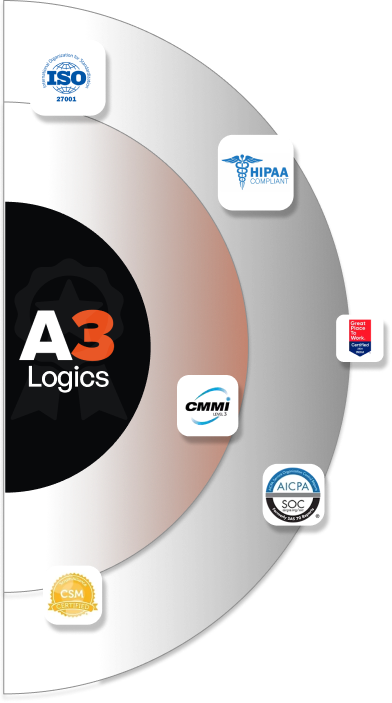Robotic Process Automation, in short, RPA, offers revolutionizing automation helps for businesses across the world. The moment organizations implement RPA, they enjoy quicker processes, a sure reduction in expenditure, and a decrease in human errors. The RPA market right now in 2025 hits around 28.31 billion. But it will soon reach $211.06 billion by 2034, with a stunning 25.01% growth rate.

All these numbers are impressive, which shows that RPA integration with legacy systems is somehow inevitable. Still, most organizations continue using legacy systems for carrying out their core operations. What are the challenges that are still hindering a smooth integration? Read them, deal with them, and come up with a systematic RPA integration to cater to the modern needs.
Table of Contents
Understanding the Integration Challenge
It is a fact that around 70% of data breaches happen where the organizations are still clinging to legacy systems. The rate of such unethical breaches is right now at its peak, with a 10% increase over the previous year, costing around $4.88 million globally.
The most astonishing thing is that companies can reduce the risk and save up to 2.22 million simply by including automation RPA in their system. But there are challenges and some misconceptions that act as bumps in the smooth legacy system automation process.
What Are Legacy Systems? Why Are They Still Critical?
Legacy systems are ancient computer systems that continue to serve core business processes in banking, healthcare, and logistics sectors. Although they are ancient, they cannot be replaced because they are stable, reliable, as well as their replacement is very costly.
They continue to be employed by businesses for transaction processing, record management, and workflow execution. That is why it is very natural for them not to want to let go of the legacy system so easily. That is exactly why they need RPA integration with legacy systems to strike a balance between stability and scalability.
Why Is Integrating RPA with Legacy Systems Complex?
The problem is that implementing RPA on such an age-old legacy system is not a cakewalk. They don’t typically include APIs, contemporary data structures, or cloud connectivity. Their interfaces weren’t designed to be automated and may have a scarcity of proper documentation. Moreover, systems with strict data access rules prove to be difficult for the RPA to get the data it needs for customized solutions. Lastly, the RPA system is still very new, improving and expanding its reach, yet a few misconceptions and doubts hinder its adoption a bit further.
Common Misconceptions about RPA And Legacy Integration
Besides the general complexities, there are common myths and misconceptions that also act to hinder a smooth RPA integration. Let’s debunk them one by one to increase your acceptance of the change.
> RPA Is Expensive to Integrate
The first and most prevalent misconception in this case is that RPA integration will be too expensive for the organization. Well, you cannot ignore the initial cost whenever you try to integrate something new into your existing system; it is inevitable.
But here you will have to be more vigilant of the return on investment that you will be getting from it. RPA integration with ERP will prove to be a cost saver in the long run as it demands much lower charges than traditional IT transformations. With RPA adaptation, companies cut their operational costs up to 30%, saving that money for further strategic development.
> RPA Will Not Be Able to Handle Legacy System’s Complexities
As it happens with any other new venture, people initially hesitate to trust its capacity. With RPA too companies show doubts on whether it will be able to process the intricacies of their existing system or not.
Note that the advanced-level RPA solutions are being developed just to counter these doubts with enhanced capacities for handling complex jobs. Further, the development in the ML and AI fields is boosting their automation ability and adaptation speed to various conditions. You can now deploy it to diverse and multiple legacy environments and get a significant increase in processing efficiency.
> RPA Will Require Complete Rework
It is yet another common skepticism that RPA integration with legacy systems will require your entire team to work endlessly to align it with the existing system. But in reality, this modern technology is adaptive by default. It is designed to smoothly integrate with the existing infrastructure, which requires no modifications for your end.
It can mimic how you and your team interact with your customers and their system software. Therefore, it results in faster processing with complete accuracy and compatibility. Hence, with time and increasing duties, RPA actually gets more efficient in its job.
Why Use RPA to Integrate Legacy Systems, and How Does It Improve the Legacy Systems?
RPA integration with existing systems is a wise substitute for costly modernization. Companies can automate mundane tasks and merge broken workflows without losing the underlying infrastructure. Once the bots are in production, they deliver speed, accuracy, and regulatory compliance. In the long run, it saves money, scales more effectively, and gets legacy platforms future-proofed while achieving real digital resilience.
Key Challenges in RPA-Legacy Systems Integration and Solutions

While RPA integration with legacy systems promises unprecedented efficiency benefits, it’s not without genuine obstacles. From the selection of optimal processes to making sure there’s regular maintenance, companies have quite a few issues to contend with. But with the right approach, you can deal with these challenges easily. So, let’s counter the RPA implementation challenges one by one to cure them from the core.
> Process Selection for Automation
Most organizations rush to automate without a process suitability assessment. This automatically translates into failed projects. The choice of a suitable process is vital because not all activities are automation-fitting. For example, unstructured tasks or activities, or things where routine human judgments are involved, should be kept separate.
To do this, start with a thorough process evaluation and prioritize repetitive, rule-based, and high-volume tasks. Once you prioritize the correct set of tasks for RPA, your existing system automation process will become smoother. Use process mining software to analyze workflows and pinpoint prime candidates for automation.
> Integration with Legacy Systems
One of the most significant RPA legacy system challenges is dealing with legacy systems with outdated technology. Legacy systems tend to have no or minimal API or existing integration potential. Integrating them into the RPA systems is thus difficult and time-consuming.
Nevertheless, you can manage around this as RPA bots can communicate with user interfaces directly, imitating human activity. Even when the legacy system is older than decades old, RPA can extract, enter, and process data with relatively minor changes. As soon as you use screen-scraping or OCR (optical character recognition), integration becomes less agonizing. Besides, the implementation of middleware or micro services can also simplify the integration of RPA with legacy systems.
> Scalability and Flexibility
RPA projects usually start small at first. However, scaling the bots across diverse departments is a significant issue. Also, the very legacy system may limit how fast and widely you scale, simply due to performance or architectural reasons.
To deal with this, design your RPA infrastructure to accommodate future needs. Wherever possible, create reusable building blocks for automation. Choose orchestration-enabled, scalable RPA software that provides load balancing and real-time monitoring. This makes your RPA integration with ERP or other legacy modules agile and scalable.
> Change Management
Deploying RPA in a decades-old environment is usually met with resistance. Employees fear job loss, and the IT departments are worried about disrupting business-critical processes.
This is where the convincing power of the leadership in good change management kicks in. Speak openly about the benefits of automating. Explain how RPA can free teams from mundane work and not displace them. Give training to upskill employees and form cross-functional teams for deployment. When people feel involved, they will be more likely to accept the transition.
> RPA Maintenance and Updates
Once deployed, RPA bots need to be updated from time to time. Any shift in the Screen layout, business logic, or system upgrades can break automations. In legacy environments, these can be unknown to the team and poorly documented somewhere.
To prevent this, implement an efficient bot management system. Schedule periodic audits to test the bot’s performance from time to time. Maintain records of how each bot works and how it gets its updates. Employ the use of version control to follow all these changes. Surely, after implementing a governance model, maintenance will be easier and less invasive.
> Data Security and Privacy Risks
Legacy systems may lack newer security capabilities. Therefore, integrating RPA with legacy systems could reveal sensitive information in case the existing system has some loopholes. Unauthorized bot access or weak encryption makes such integrations riskier.
To counter this, you can start with role-based access control and let bots touch only what they need to. Regularly audit and log bot activity to monitor for unusual behavior. Engage your cybersecurity professionals as much as possible from the very beginning. Their input keeps the legacy system automation compliant and secure.
> Governance and Compliance
Compliance is an important consideration, especially in finance, healthcare, and insurance industries. Bots interfacing with legacy systems must align with such compliance and regulatory standards. But the legacy platforms may lack a sufficient number of compliance monitoring tools.
Therefore, the solution here is to choose a good governance framework. Define stringent policies for bot behavior, data processing, and exception handling. Use RPA software with compliance as a built-in feature. Additionally, use audit trails, approval workflows, and notifications. The instant you align automation practice with legal regulations, your risks drop.
Discuss the Benefits of Deploying RPA in Legacy Systems
As companies work towards becoming more efficient, RPA integration with legacy systems is a smart and scalable option. Legacy systems may be outdated but carry out some key business processes. That is the reason why combining RPA with them is advantageous in the short term as well as the long term. Let us learn how automation makes old systems an asset.
Automation of Business Processes
One of the most apparent benefits is that with RPA, the repetitive, time-consuming work gets fully automated. Legacy systems normally involve employees manually entering or transferring data between independent applications. Such operations are tedious, error-prone, and time-consuming.
With legacy system automation, RPA bots have no breaks at all as they run 24/7 if you want to. They copy and paste information, generate reports, and perform rule-based functions faster than humans. As soon as bots take over these tasks, productivity improves by a wide margin. Firms see reduced errors, faster delivery, and happier teams.
Integrate Different Workflows
Most legacy systems are not very communicative with each other which often creates workflow delays, data silos, and process inefficiencies. Integrating RPA with existing systems solves this by connecting the dots between different platforms, even if they were never meant to be together.
RPA does not rely on expensive system access or APIs. Instead, it emulates human interactions between screens. It works on passing data seamlessly from one system to another, such as CRMs, ERPs, and homegrown apps. The outcome? An easy workflow that lets departments exist side by side without having to rewrite the entire IT stack.
Low Expenses
One of the main reasons why firms do not upgrade legacy systems is the cost. Entire modernization initiatives are costly, risky, and time-consuming. That is why RPA integration with ERP provides a cost-saving solution.
RPA enables you to enhance operations without exchanging systems. You don’t have to undertake huge coding, hardware revamps, or migration over months. Instead, you merely deploy bots that communicate with what you already possess. With RPA bots working by your side, you save labor costs, lower manual errors, and achieve ROI of RPA earlier.
Improved Future Readiness
Merely because your legacy system is not recent does not mean that it has the right to hamper your future prospects. RPA helps you acquire a technological advantage and transform your company into a future-proof one.
The instant you fire up automations, you establish an innovation culture. Your staff gets accustomed to working with bots, their observations align with each other, and their overall decision quality improves. Therefore, RPA is a building block for complete digital transformation, providing you with a smoother upgrade process in the future.
Low-security Issues
Contrary to the general impression, RPA can also reduce legacy environments’ security risks. One of the biggest causes of data breaches is human error, especially when staff members carry out sensitive operations manually.
Bots are regulated by rigid rules and never commit sloppy errors. Bots never log off, send information to the wrong individual, or leave a screen open. With this, you can utilize appropriate controls over the bots to restrict access and safeguard sensitive data. This renders RPA integration with legacy systems a more secure solution, particularly in compliance-intensive sectors.
Reduced Employee Workloads
Once the drudge work is handled by automation, employees reclaim their time. They no longer spend hours on tasks such as typing in bills or duplicating customer information.
They’re able to concentrate on more advanced, value-added tasks. This enhances job satisfaction and morale. Employees are more motivated since they’re resolving problems, not doing the same thing over and over. Hence, your staff becomes more agile, productive, and innovative in the long run.
Best Practices for Integrating RPA with Legacy Systems
Integrating RPA with legacy systems successfully relies on careful planning and proper execution. It does not matter how excellent the possible benefits are; they can be achieved only with a well-planned setup. The following best practices guarantee smooth, secure, and scalable automations with vintage platforms.
1. Thorough Assessment and Planning
Before you send a single bot onto the field, sit down and examine your business needs, systems, and processes. Learn what the limitations are that your team faces with the older platforms. Determine areas of pain and look for high-impact, rule-based processes to automate first. After you do a good analysis like this, you minimize risks and maximize outcomes.
2. Choose the Right Integration Techniques
Various systems require various integration approaches. For legacy systems, screen scraping or UI automation could be preferable in place of using API connections. But if your system permits it, applying APIs is always better, as they will offer you more stability. Therefore, choose the most stable and sustainable approach based on system compatibility.
3. Leverage APIs and Middleware
Wherever feasible, utilize APIs or middleware to facilitate simpler system communication. Such methods assist in filling the gap between newer-generation RPA software and older programs that are not as integral. Middleware provides more control, and APIs provide more precision, that too with fewer maintenance needs.
4. Standardize and Cleanse Data
Legacy systems retain stale or inconsistent data. That is why you need to clean and normalize data beforehand to have consistent bot performance. Structured data allows bots to read, process, and transfer information faultlessly. Once your data is cleaned, your automation automatically becomes more efficient.
5. Focus on Scalability from the Start
Prevent short-term orientation and plan your growth automation plan from the beginning. You can create reusable bots and process modules. Also, leverage RPA tools with centralized control and analytics features. Investing in planning to scale today will save you time and effort in the future. You can keep on scaling the automation process to more departments.
6. Customize and Tailor RPA Solutions
No single solution fits legacy systems forever; you will have to keep on improving them. But to solve this issue, you can tailor RPA solutions to the unique business workflows and system behavior. The moment you tailor bots to your process, they perform with higher precision and need fewer fixes later on.
7. Enhance User Experience and Accessibility
Never forget your end users and ask if automation aids them, and make it easy for them to avail of your service. Provide easy-to-use interfaces and easy-to-understand dashboards. Also, offer employees with control so it’s easy for them to monitor, or override bots when needed.
8. Ensure Security and Compliance
Security should be at the forefront of mind while advancing towards RPA integration with ERP. Employ encryption, role-based access, and audit trails to confirm maximum security. Involve compliance and IT teams to ensure automated processes comply with industry regulation requirements. Automation may get the job done as quickly as possible, but it should never compromise security.
9. Invest in Change Management, Training, and Development
RPA is not a mere technological upgrade; it’s in fact a cultural change. Get workers trained early and clearly communicate the positives. Provide experiential training to remove the fear and help them get up with more confidence. Once individuals feel learned and invested, they embrace automation quickly and with better prospects.
10. Establish a Governance Framework
Without governance, RPA can spin out of control. Implement a framework for the bot creation, update, and access control. Establish responsibilities for each separate team and implement policies on that. A defined governance model confirms that integrating RPA with existing systems will remain organized and compliant in the long run.
Real-World Examples and Use Cases
Several industries have achieved real value from the combination of RPA and legacy environments. Particularly, the ones who were previously suffering from outdated platforms, manual labor, and data complexity are seeing improvements. Here are a few of them.
Banking
Legacy mainframes remain heavily used by banks to handle their core operations. Banks can use legacy system automation for automating customer onboarding, loan processing, and compliance reporting. For example, RPA bots now check KYC information in seconds.
Healthcare
Hospitals have older electronic health record (EHR) systems. By shifting to RPA bots, they can automate patient information entry, claims settlement, and billing. Once these admin jobs are made semi-automatic by bots, doctors can spend more time on patient care.
Logistics
Logistics companies employ RPA to mediate gaps between warehouse management systems and transport platforms. Robots update shipping status, create invoices, and manage inventory. Therefore, it automatically increases accuracy, and operations become easier without changing the IT infrastructure.
Additional Brief Case Studies from Other Industries
In manufacturing, robots refresh data between ERP and manufacturing management systems without compromising legacy systems. Additionally, insurers leverage RPA to automate claims payment and identify fraud. One thing is for sure: RPA integration with ERP generates monumental value overnight, irrespective of the industry type.
All of these success stories are the testimonials of how integrating RPA with legacy systems can prove fruitful. It assists companies to innovate, save costs, and drive growth, without replacing core systems.
Conclusion
RPA integration with legacy systems is a cost-effective approach to modernization. The moment companies adopt smart automation, they gain speed of process, reduce overall errors, and future-proof their performance. Moreover, all of these benefits come down the stream without the expense of replacing the older systems. So, what are you waiting for? Make your company’s operation future efficient with the help of the leading RPA development company today.







